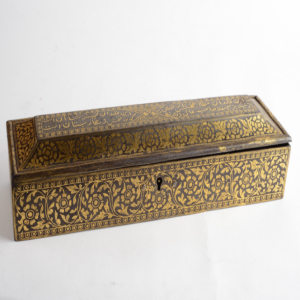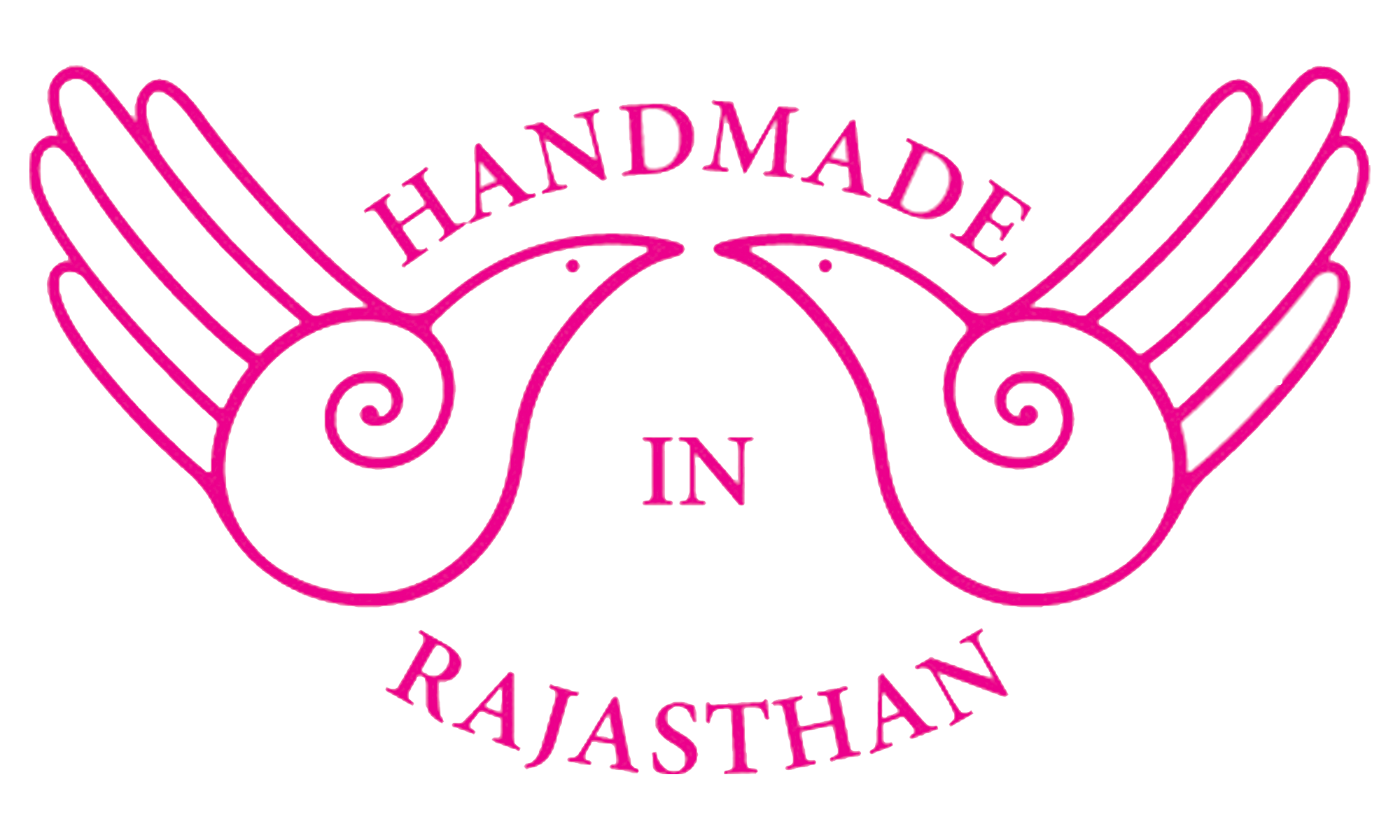- Home
- About US
- Art and Craft
- Artisans
- Master Crafts Persons
- Supporting Institutions
- News and Events
- Schemes
- Contact us
- Contact

The inlay of gold and silver wire on iron objects, was traditionally practiced by the Siklikar who crafted functional yet exquisitely ornamented weaponry for the Rajput warriors. First, the surface of the metal object to be ornamented is evenly scratched to create a rough, finely lined surface, heated on a stove until red hot and then allowed to cool naturally. The object is clamped in a vice and the process of embedding wire into the metal is begun-silver or gold wire is laid on the abraded metallic surface and pressed, the wire is further flattened with the aid of opni or moonstone. Larger areas such as the tip of the dagger are executed in silver or gold leaf. With the decline of the feudal lifestyle the craft that catered to the functional requirement of the damascened products came to a close .The more recent of the previously used double taan or thicker wire that gave the pattern greater prominence, has led to deterioration in the craftsmanship.
The sheer strength and power of a Damascus steel sword, its dark grey colour and majestic form are beautifully completed by intricate floral motifs drawn with glistening precious metals on its sheath and richly embossed hilt. Ornamentation on armament was integral to Mughal and Rajput cultures. Traditionally, the Siklikar community has been practicing this craft in Udaipur, Rajasthan.The base metal, usually Damascus steel, is first scratched all over its surface with a knife (known as chirni) in a very close cross-hatched pattern. These fine scratches help in holding the inlay metal securely. With just a few guidelines marked on the surface, craftsmen start laying thin silver wires for making outlines of the patterns. Pressing the wires with a pointed tool called “salai” fixes them in the etched grooves. After the outlines, the main motifs are made and then filled with closely placed gold or silver wires. Deft fingers place the fine wires of silver and gold with such precision and fluency; it is difficult for a layman to even draw with such skill on paper. Motifs so exact, it is as if made by a block and repeated to get a web of identical patterns. Once the motifs are filled, the outlining silver wires are removed and melted for reuse. The article is then heated and rubbed with hakik stone (agate) for a polished finish. Earlier, kings would commission the embellishment of ritual weaponry to craftsmen who would let their imagination take a flight to create something the king had never seen before. The only brief was to make something so amazing that the king would be impressed. Motifs can cover a wide variety of subjects, from flora and fauna, to gods and goddesses, to scenes from the lives of kings. A strong Mughal influence is also seen in the designs. Designs with both gold and silver wires are known as “Ganga – Jamuna” and the ones made with gold-silver alloys are called “Hara Sona”. Craftsmen are now giving new directions to this art, by ornamenting objects of utility, such as vessels, mirror frames and even jewelry. But souvenir weapons like knives and daggers remain most popular, reinforcing the status of this magnificent craft in regal finery.

